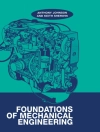Revealing suspension geometry design methods in unique detail, John
Dixon shows how suspension properties such as bump steer, roll
steer, bump camber, compliance steer and roll centres are analysed
and controlled by the professional engineer. He emphasizes the
physical understanding of suspension parameters in three dimensions
and methods of their calculation, using examples, programs and
discussion of computational problems. The analytical and design
approach taken is a combination of qualitative explanation, for
physical understanding, with algebraic analysis of linear and
non-linear coefficients, and detailed discussion of computer
simulations and related programming methods.
* Includes a detailed and comprehensive history of suspension and
steering system design, fully illustrated with a wealth of
diagrams
* Explains suspension characteristics and suspension geometry
coefficients, providing a unique and in-depth understanding of
suspension design not found elsewhere.
* Describes how to obtain desired coefficients and the
limitations of particular suspension types, with essential
information for suspension designers, chassis technicians and
anyone else with an interest in suspension characteristics and
vehicle dynamics.
* Discusses the use of computers in suspension geometry analysis,
with programming techniques and examples of suspension solution,
including advanced discussion of three-dimensional computational
geometry applied to suspension design.
* Explains in detail the direct and iterative solutions of
suspension geometry.
Giới thiệu về tác giả
Dr John C. Dixon, Eur. Ing., M.A., Ph.D., C.Eng, C.Phys, FIMech E, FRAe S, Minst P, MIET, is a Senior Lecturer at the Open University. He has extensive experience in vehicle dynamics, including shock absorber design and testing for leading racing teams. His previous books include The Shock Absorber Handbook Second Edition, Tires, Suspension and Handling Second Edition and The High Performance Two Stroke Engine.












